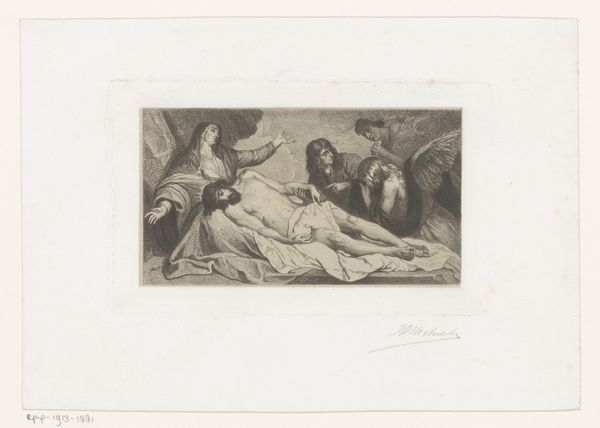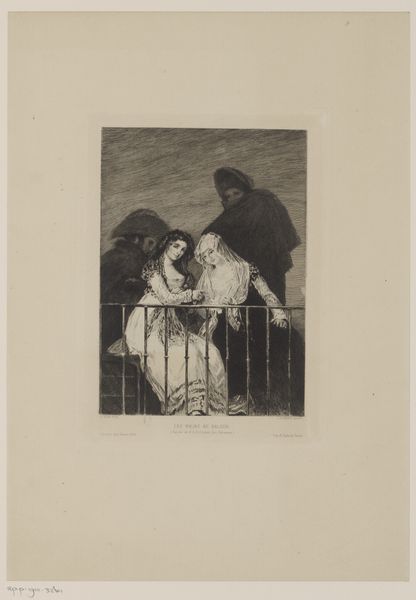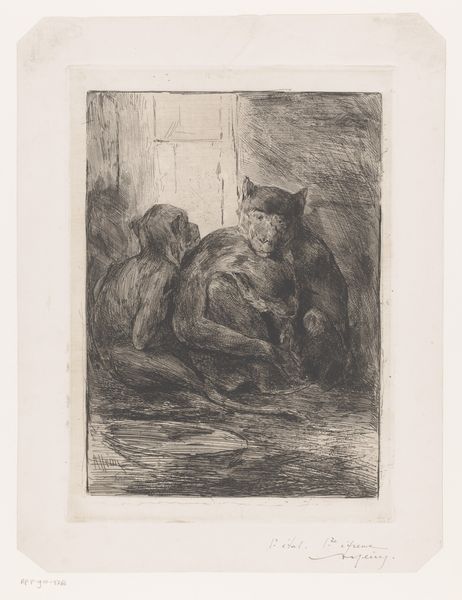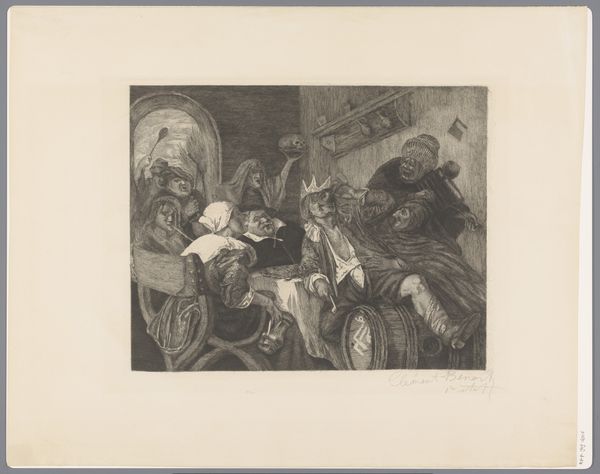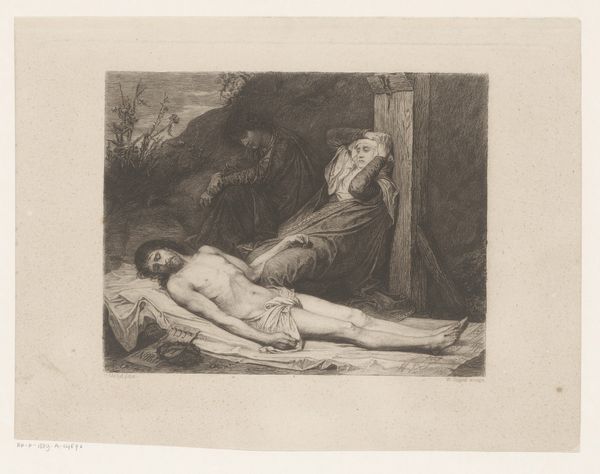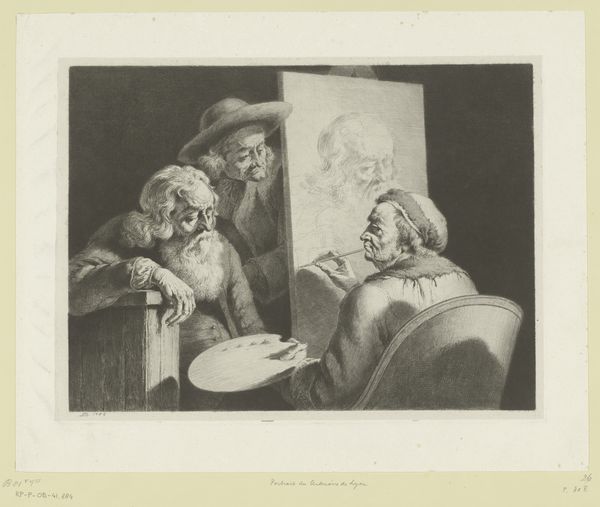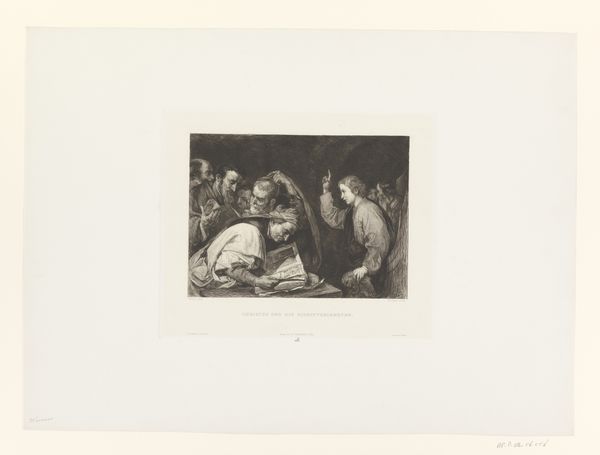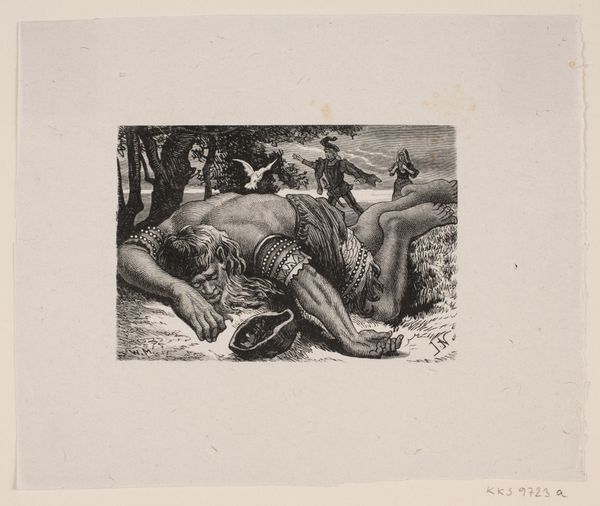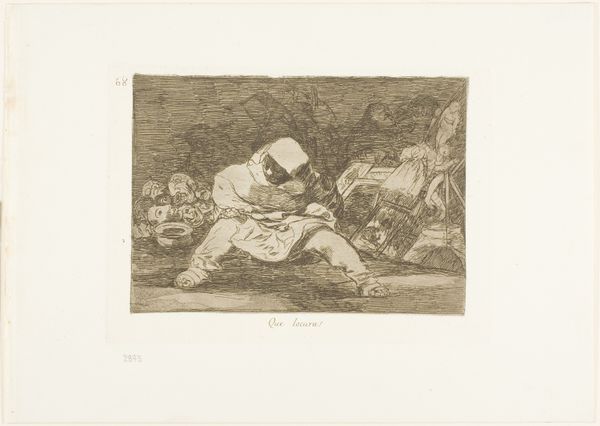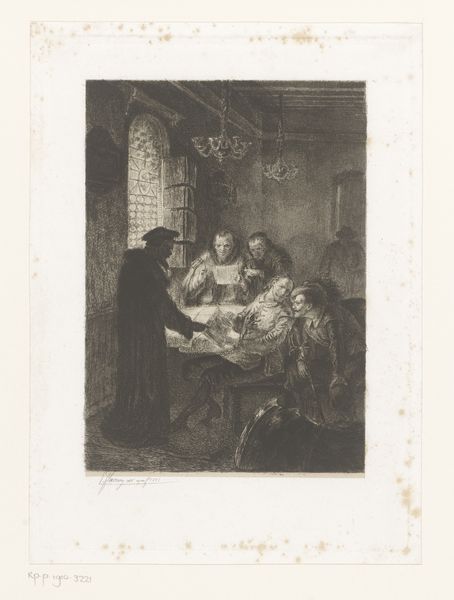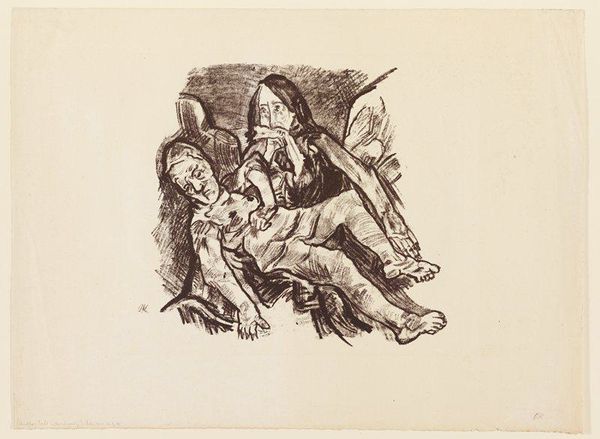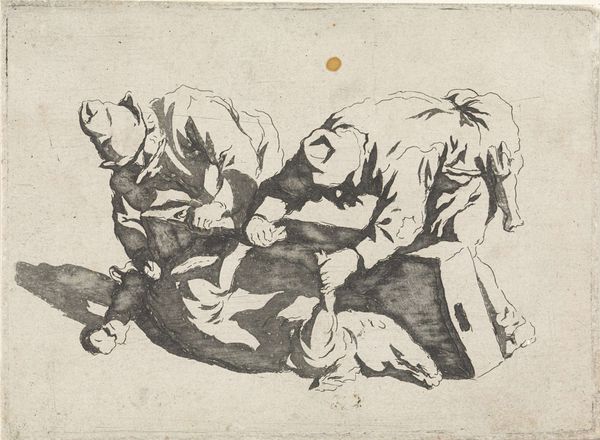
print, engraving
# print
#
figuration
#
history-painting
#
engraving
#
realism
Dimensions: height 233 mm, width 296 mm
Copyright: Rijks Museum: Open Domain
This print, "H. Sebastiaan martelaar" was made in the late 19th century by Louis Monziès using a technique called etching. Etching begins with a metal plate, typically copper or zinc. The artist coats the plate with a waxy, acid-resistant substance known as the 'ground'. Then, using a sharp needle, the artist scratches an image into the ground, revealing the metal underneath. The plate is then immersed in acid, which bites into the exposed lines, creating grooves. Ink is applied to the plate, filling these grooves, and the surface is wiped clean. Finally, the plate is pressed onto paper, transferring the image. The result is a print with fine, precise lines, lending itself well to detailed scenes and tonal gradations. Here, Monziès uses this technique to create a dramatic and emotionally charged scene, where the quality of the etched line adds to the somber mood. Etching democratized artmaking by allowing for multiple original prints to be created, instead of single originals. It's a process that bridges the gap between skilled craft and mass production, asking us to reconsider traditional hierarchies of art.
Comments
No comments
Be the first to comment and join the conversation on the ultimate creative platform.
